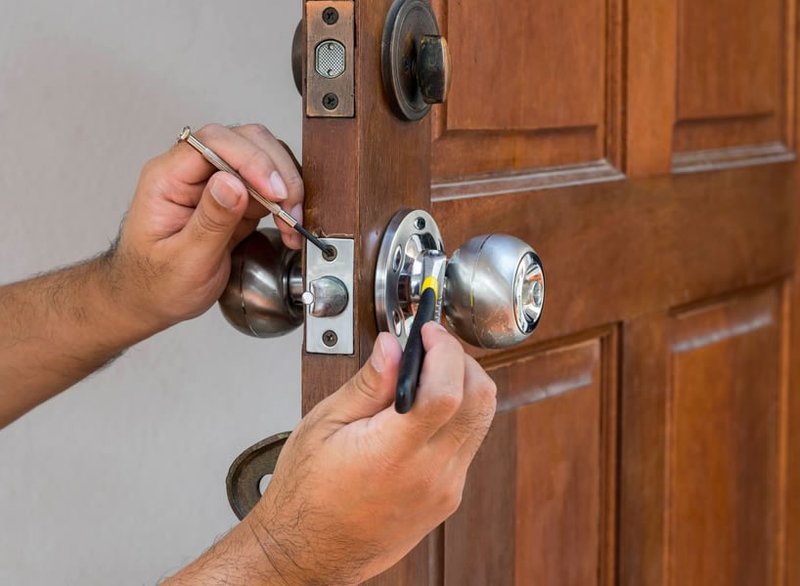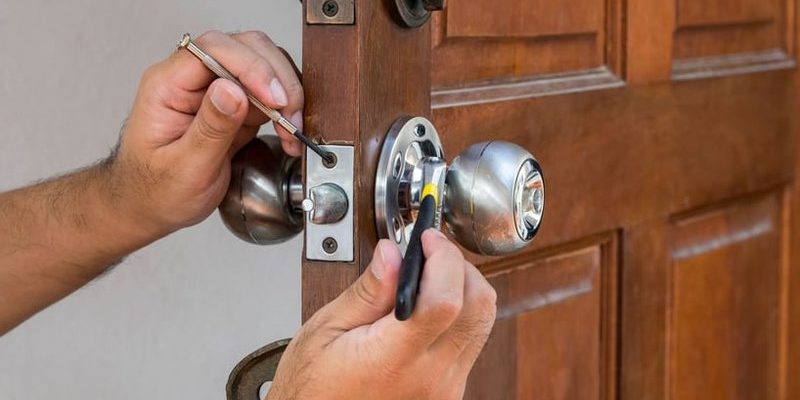
Think of a door latch like the clasp on a necklace. If it gets loose, the necklace can fall off and cause a mess. Similarly, if a door latch is loose, it can lead to a door that won’t close securely, creating frustration. You might be wondering how to fix this common nuisance, even if you’re not a seasoned handyman. Let’s dive into troubleshooting and fixing a loose door latch together, step by step.
Understanding the Problem: Why Is Your Door Latch Loose?
When your door latch is loose in the door bore hole, it typically means the screws securing the latch have become loose over time. This can happen for several reasons, like regular wear and tear, changes in temperature affecting the door’s materials, or even a poorly installed latch. If you think about how often a door is used, it makes sense that components can wear out, especially if the latch is frequently slammed or pulled.
Another possible cause could be the door itself. If the door has sagged, it might not align correctly with the latch. This misalignment can prevent the latch from fitting securely and holding the door shut. In some cases, you may even find that the latch has been damaged or that the bore hole itself has worn out, giving the latch too much wiggle room.
To effectively troubleshoot a loose latch, start taking note of how it behaves. Does it wiggle only when the door is closed, or is it loose regardless of the door’s position? Observing how the latch interacts with the striker plate can offer clues about whether it’s more than just a loose screw you need to fix.
Tools You’ll Need for Troubleshooting
To tackle a loose door latch, you’ll need a few basic tools. Gathering the right items can make the process smoother and quicker. Here’s what you might need:
- Screwdriver: A standard or Phillips head screwdriver, depending on your latch screws.
- Wood glue or epoxy: For any stripped screw holes that need reinforcement.
- Wood filler: Useful if the bore hole is too large, which can happen with age.
- Measuring tape: Handy for measuring alignment issues.
- Level: This can help you check if the door is properly aligned.
Having these tools ready will save you from unnecessary trips to the hardware store during the repair. It’s always good to be prepared before diving into a project, especially if it’s your first time dealing with a door latch issue.
Step-by-Step: Tightening the Latch
Now that you have your tools, let’s move on to the actual troubleshooting. The first step is to tighten any loose screws holding the latch in place. Here’s how to do it:
1. Identify the screws: Look closely at the latch mechanism to find the screws. Usually, there are two or three screws securing the latch.
2. Tighten the screws: Using your screwdriver, gently tighten each screw. Be careful not to over-tighten, as this could strip the wood or cause further issues.
3. Test the latch: After tightening, check if the latch is still loose. Try opening and closing the door a few times. If it’s still wobbly, more adjustments may be needed.
If the screws continue to loosen, the problem might be with the wood itself, which leads us to the next step: reinforcing the bore hole.
Reinforcing Stripped Screw Holes
Sometimes, the reason a latch won’t hold firmly is that the screw holes have become stripped. This means the screws can’t grip the wood effectively. If you find that tightening the screws doesn’t help, it’s time to reinforce those holes. Here’s how you can do it:
1. Remove the latch: Start by taking off the latch entirely by unscrewing it.
2. Fill the holes: Use wood filler or epoxy. Pack it into the stripped holes, ensuring it’s full.
3. Let it dry: Follow the instructions on your filler product for drying time.
4. Reinsert the screws: Once dry, reattach the latch using the same screws. The newly filled holes should give a stable grip.
This method not only helps in holding the latch tight but also extends the life of your door mechanism.
Aligning the Door and Latch
Sometimes, a loose latch is simply the result of misalignment between the latch and the strike plate. If the latch doesn’t line up with the hole in the frame, it can cause problems. Here’s how to check and fix alignment issues:
1. Close the door: Gently close the door without locking it. Look from the side to see if the latch fits snugly into the strike plate.
2. Check for gaps: If you notice a gap, it’s likely that the door has sagged or shifted.
3. Adjust the hinges: You might need to adjust the hinges by tightening the screws. If the door is still misaligned, consider adding washers behind the hinge plates to raise the door.
4. Test it out: After making adjustments, close the door again to see if the latch aligns correctly now.
Sometimes just a little tweak can make a world of difference, ensuring that your door fits perfectly and latches securely.
Preventative Measures: Keeping Your Latch Secure
Once you’ve fixed your latch, you’ll want to keep it that way. Here are a few preventative measures to consider:
- Regular inspections: Check the latch and screws every few months. This can save you from major repairs.
- Avoid slamming: Encourage family members to treat the door gently. Slamming can lead to misalignment.
- Consider weather changes: If you live in an area with fluctuating temperatures, be aware that wood can expand and contract.
By being proactive, you can extend the life of your door hardware and avoid the hassle of future latch issues.
When To Call a Professional
If you’ve tried all the troubleshooting steps and your latch is still loose or misaligned, it may be time to call in a professional. Sometimes, underlying issues could be at play—like a door frame that’s warped or damaged due to moisture or time.
An expert can assess the situation and recommend a more permanent solution. Investing in professional help now can save you time, frustration, and money in the long run.
Troubleshooting a loose door latch in the bore hole doesn’t have to be a daunting task. With some basic tools and a bit of patience, you can ensure your door functions smoothly again. Start by tightening screws, reinforcing stripped holes, and checking for alignment. Remember, regular maintenance is key to keeping your doors secure against drafts and intruders.
With a little care, your door can remain as reliable as that trusty friend you can always count on. So, don’t put off those minor repairs—take the time to give your door the attention it deserves. You’ll appreciate the peace of mind that comes with a well-functioning latch.
